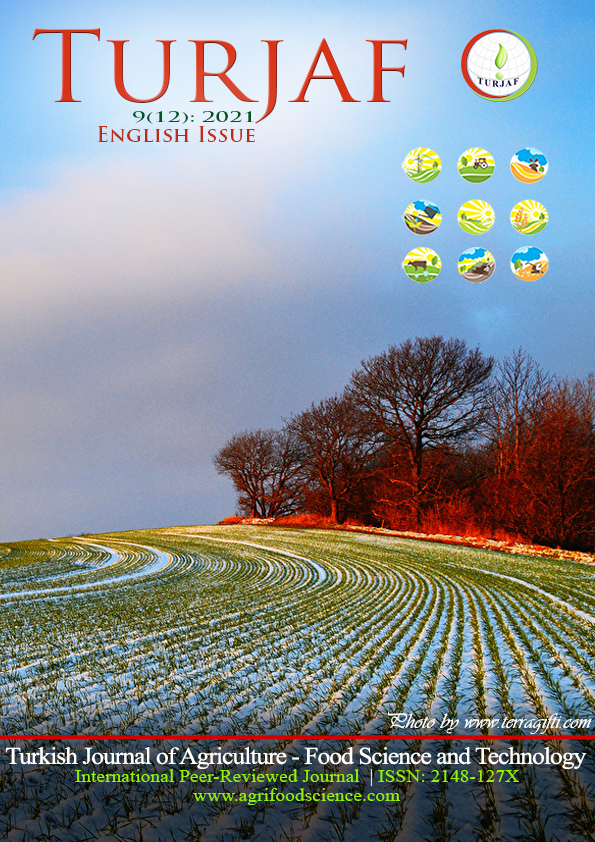Different Aspergillus niger Strains and Inoculum Levels Affect the Nutritional Composition of Olive Leaves in Solid-state Fermentation
DOI:
https://doi.org/10.24925/turjaf.v9i12.2303-2307.4748Keywords:
olive leaves, Aspergillus niger, inoculum level, nutritional composition, solid-state fermentationAbstract
This study was conducted to investigate the effects of Aspergillus niger strain and inoculum level on the nutritional composition of olive leaves. The experiment had a 2×3 factorial arrangement of treatments with two A. niger strains (ATCC 200345 [A] and ATCC 9142 [B]) and three inoculum levels (104, 106, and 108). Olive leaves were milled to 2 mm and fermented in solid-state by two different A. niger strains and analysed for nutritional composition. Crude protein (CP) was increased linearly as the inoculum level increased. Ether extract (EE) and crude fiber (CF) were decreased linearly in A strain or quadratically in B strain with increased inoculum levels. Crude ash and nitrogen-free extract content did not differ among groups. Strain A increased neutral detergent fiber (NDF) at higher inoculum level, whereas NDF was decreased as inoculum level increased in B strain. The lowest acid detergent fiber (ADF) was obtained from the B strain or 106 inoculum level. The results showed that the effect of two strains on CP and ADF changed similarly with increased inoculum levels. However, two strains affected EE, CF, and NDF content differently with increased inoculum levels. The optimal situations were 108 inoculum level for higher CP, A104 or B104 for higher EE, B106 for lower CF, B106 or B108 for lower NDF, 106 inoculum level or B strain for lower ADF. B strain at 106 inoculation level can be preferred to obtain an average CP and EE content and lower CF, NDF, and ADF content.Downloads
Published
26.12.2021
How to Cite
Altop, A., Güngör, E., & Erener, G. (2021). Different Aspergillus niger Strains and Inoculum Levels Affect the Nutritional Composition of Olive Leaves in Solid-state Fermentation. Turkish Journal of Agriculture - Food Science and Technology, 9(12), 2303–2307. https://doi.org/10.24925/turjaf.v9i12.2303-2307.4748
Issue
Section
Research Paper
License
This work is licensed under a Creative Commons Attribution-NonCommercial 4.0 International License.

























